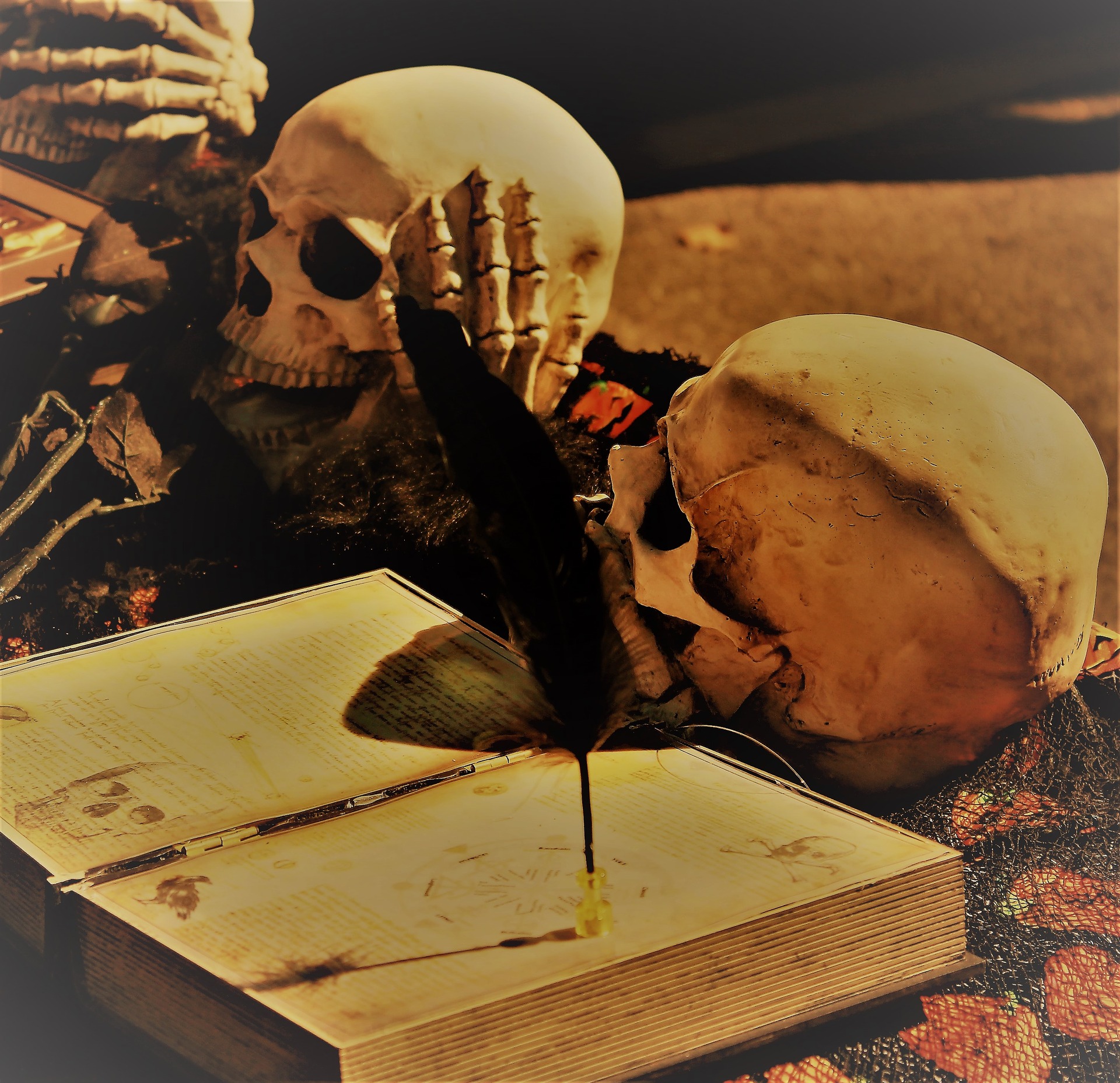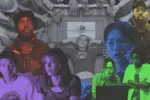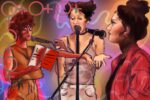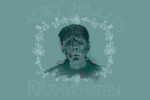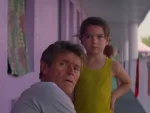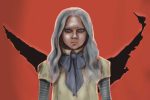D.A. Fowler wrote eight horror novels between 1991 and 1994 — or maybe it’s 10. The information on D.A. Fowler, who also published under the name Debra Fowler and Debra Franklin, is scant, to say the least. Although ISBNs exist for books called “Darkness” and “Sweet Revenge,” the two lost novels are not available through interlibrary loan, and cover art is nowhere to be found on the internet. There’s not much in the way of information about Fowler, but the most important thing is her impressive work is not being forgotten. Fowler’s two earliest novels, “What’s Wrong with Valerie?” and “The Devil’s End,” were reissued this year, and her four other adult horror novels will also see a reissue sometime soon.
The outrageously bizarre and graphic nature of her horror stories are evidence of the author’s unabashed love for the grotesque. She makes the mingling between horror and comedy feel natural rather than condescending. The novels make genre elements feel like just another piece of a totally ludicrous set of circumstances. Fowler uses the frequent, unknowable horrors of a character’s perspective to drive home the juxtaposition between reality and the ostensibly supernatural; the constant potential for the focus to shift from simple reality to otherworldly horror is responsible for some of her most cruelly funny writing. Rather than using absurdity to distance herself from the genre, the genre feels like the perfect setting for Fowler’s distinct take on horror.
The basic plots of Fowler’s novels might seem lightweight at a passing glance, but the way she examines different sides of her pet narrative motifs is particularly impressive. She buries her nuance beneath layers of trashy and grotesque incident, as her novels feel driven by a desire to create her own gory and twisted worlds. Fowler effectively uses horror to make subtle commentary on her genre and her surroundings, but she buries her thematic aims in the ostensibly unimportant details of the characters. For someone with such a love of chaos and carnage, it’s unsurprising she doesn’t want to work her story around an obvious, easily digestible message.
Check out What's Wrong with Valerie? by D. A. Fowler 1991 paperback rare Horror https://t.co/Sh7FIIEyDk via @eBay
— The Bookstore of Nevermore (@Kippoe) December 15, 2019
Evil twins and doll-obsessed children might seem dull in the vast world of horror; however, the odd touches and individual approach to the genre elevate her takes on potentially tired iconography. The books quickly build up scenarios where the familiar is almost unrecognizable in description or motive; vampires in a D.A. Fowler novel resemble tentacled cats, feed on dead bodies and are led by a ghost with its own abilities. The books stand on their own, but it’s impressive to see how Fowler reworks her favorite narrative moves and themes.
Her first novel, “What’s Wrong with Valerie?,” begins with an eerie nightmare of yellow eyes in the darkness. The scene establishes a sense of unease, but the whole maneuver is just the first in a series of impish tricks pulled by the novel. The novel’s creepiness is often presented in how characters are unfamiliar to Valerie’s motives and thought processes. If the reader is suggestive to the horror of the novel’s beginning imagery, it is because we are as unaware of Valerie’s amusingly deranged methods. Rather than existing as a simple twist in the tale, her novels’ surprises often reveal another layer of her thematic aims and deflate tidy solutions. “The Book of the Damned” features a number of twists that make the novel’s thoughts about the effects and purposes of horror fiction come together in a grim and hilarious way.
The Book of the Damned by D.A. Fowler
— trina k (@TrinaLou78) October 23, 2019
Along with having a fondness for twists, Fowler is also interested in looking at the duality of her characters and plots. The duality in Fowler’s stories is an extension of her characters’ desire for escape. In “Flesh and Blood,” her fifth novel, the two sides of its main characters share inexplicable visions of homicide. The possibility of committing murders in some sort of dreamscape also feels at home with Fowler’s penchant for giving her wicked characters an outlet. The different sides rarely wrestle for control, as the more supernatural or violent sides of their personalities either feel unstoppable or relieving.
The duality of Fowler’s characters also feels like an extension of their need for some form of artistic expression or gratification. The craving for personal expression, however, is always interrupted and perverted by forces beyond their control. The typewriter Valerie uses to write her novel quickly becomes a tool for communicating with spirits that no one else can see, and the magic of “The Devil’s End” sees quick fixes for acne and hateful teachers turn apocalyptic. While it’d be easy to paint the characters of her novels as misunderstood victims of an uncaring world, Fowler fully recognizes and embraces the self-destructive aspects of people’s relationships with art. Her novels suggest the unorthodox pleasures of performing ritual sacrifices and reading trashy horror novels are more fulfilling than the bleakness of living a spotless, respectable life.
Those respectable lives are often lived out by the siblings and parents of Fowler’s characters. There’s a running theme of the weight of family abuse, expectations and beliefs on successive generations. “The Devil’s End” characterizes the parents of the teenage main characters as being disillusioned by their own inability to live by or see value in the supposed safety of marriage. Fowler takes great care to show the values of not just the parents but also the grandparents of the teens, which makes generational differences just feel like a never-ending cycle of cautioned values producing rash rebellion. This rebellion represents a desire to sever family ties, and her reoccurring revelations of being orphaned among the most rebellious feel like a sly actualization of the character’s most antisocial moves. Fowler’s novels show how people hopelessly try to resolve or change the messy transgressions of their kin.
*SIGNED* D. A. Fowler book and original (?) XMas poem. 😎@lay_jim @toomuchhorror @grady_hendrix @HorrorPaperback @Authorfan @Charrlygirl @PaperbackMania @EdLaabes @Robert_Essig @bookmovieguy @LordFroggy @StClare513 @StefanDz11 @zach1108 @OzNoir @RichardChizmar @HeyLilThrifter pic.twitter.com/HyyFJW9YbD
— Ron Clinton (@ron_clinton) April 11, 2019
The greatest achievement across Fowler’s novels is how she makes the futile actions of her characters feel unburdened by the pointlessness of their endeavors. If feeding people to vampire cats and falling prey to cursed books are the only ways to interrupt the mundane, her characters are willing to go out in a gory mess. The folly of her characters’ actions frequently feels risible against their harsh circumstances, but Fowler demonstrates how our ugly, unorthodox coping methods can be valuable outside of their ability to make desirable change. Her focus on spiteful people and outlandish violence is a tacit acceptance of those actions as the unintentionally hilarious swipes at avoiding inevitable death. If God laughs when we plan, Fowler suggests we might as well be in on the joke.


